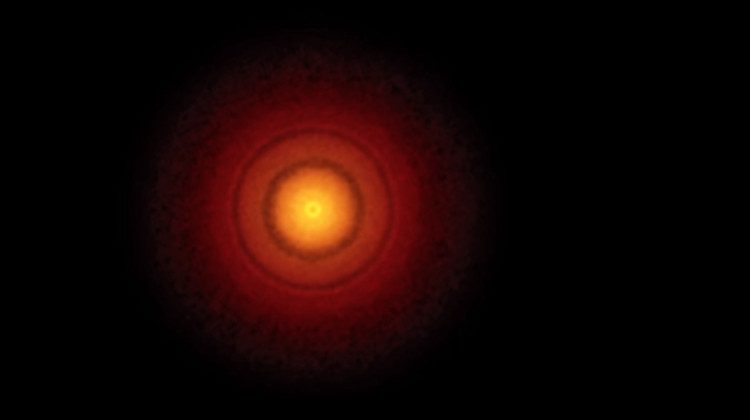A planet with an orbit similar to Earth is forming in the dust cloud surrounding the star TW Hydrae, which is located 175 light-years away from us.
The star TW Hydrae is 175 light-years from Earth and has a protoplanetary disk rotating around it. Astronomers believe this is a scene reminiscent of the Solar System 4.5 billion years ago, according to Business Insider.
According to Sky and Telescope, a team led by Dr. Tomohiro Yoshida from the National Astronomical Observatory of Japan has identified a new planet with a mass four times that of Earth orbiting a new star that is 8 million years old, named TW Hydrae.
More specifically, they discovered signs of shock gas within the protoplanetary disk of TW Hydrae through data from ALMA, an extremely powerful array of 66 radio telescopes located in the Atacama Desert in northern Chile.

Dust rings at a distance from the parent star equal to the distance from Earth to the Sun.
The international research team used the Atacama Large Millimeter Array (ALMA) in Chile to observe the processes occurring within the gas and dust disk. They discovered that one of the dust rings is located at a distance from the parent star equivalent to the distance from Earth to the Sun.
As the developing planets collect gas and dust, they also release material into the surrounding environment in the form of jets.
The shock gas recorded by the “eye of God” ALMA is this material jet, which is moving outward forcefully and impacting the surrounding environment, creating shocks that trigger the formation of molecules like sulfur monoxide (SO), which can be detected by astronomers.
Efforts to measure this material flow also help scientists estimate the mass and size of the young planet being born.
Based on the location of the shock gas and the gap created in the protoplanetary disk by the young super-Earth, scientists estimate that this planet is about 42 astronomical units (AU) from its parent star, which is 42 times the distance from the Sun to Earth.

Enlarged image from ALMA data showing a young star situated within a large protoplanetary disk, along with a faint gap created by the “newborn” super-Earth – (Image: ALMA).
The young star TW Hydrae is approximately 175 million light-years away from Earth and is the closest star with a known protoplanetary disk to humanity.
This disk is only present for a short period while the star is still young. All the material from this disk will gradually coalesce into planets.
Therefore, a star in the period of having a protoplanetary disk is a rare and intriguing astronomical target.
Overall, this research provides further evidence of the presence of a new planet around TW Hydrae, and we can look forward to future observations that may help monitor the development of potential planets in this system.
This also offers humanity a way to get a “backward glimpse in time” at Earth in its early stages when it was forming from the protoplanetary disk of the Sun.


















































